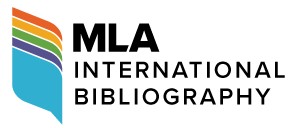Abstract
In an effort to preserve Zen and print Jiaxing Tripitaka, Buddhist monks in the late Ming Dynasty inherited the “Literary Text Zen” of the Song Dynasty, while shifting the focus on “literary texts” to Buddhist sutras. This approach was extended to various art forms, including calligraphy, painting, and drama, leading to the creation of a new “literary text Zen.” Their in-depth explorationof the essence of Buddhist Zen and “literary texts” removed traditional taboos surrounding literary creation, fostering unique literary thoughts that emphasized respect for the Tao and virtue, identified poetry as true Zen, and saw literary works as expressions of human nature. They integrated Buddha teachings with the secular world, regarding the image of “swans flying across the sky and their shadows sinking in the water” as the ultimate state of calligraphy. Additionally, based on the principle of “the five elements together archieving harmony,” they formulated norms for Buddhist drama creation and performance, which reflected an awareness of a distinctive Buddhist drama style. The voyage of Yinyuan Buddhist group to Japan and the establishment of Huangbo Zen Buddhism further spread “Literary Text Zen” circulated further to Japan, resulting in the birth of “Literary and Art Zen.” These developments yielded the prominence of Buddhist literary and artistic creation in the Buddhist cultural circle of East Asia.
Keywords
late Ming Dynasty, literary text Zen, literary and art Zen, overseas evolution, Buddhist thought on literature and art
First Page
192
Last Page
204
Recommended Citation
Yanming, Wang. 2024. "From “Literary Text Zen” to “Literary and Art Zen”: The Reconstruction of Literary Zen in the Late Ming Dynasty and the Evolution of Buddhist Thought on Literature and Art." Theoretical Studies in Literature and Art 44, (5): pp.192-204. https://tsla.researchcommons.org/journal/vol44/iss5/19


